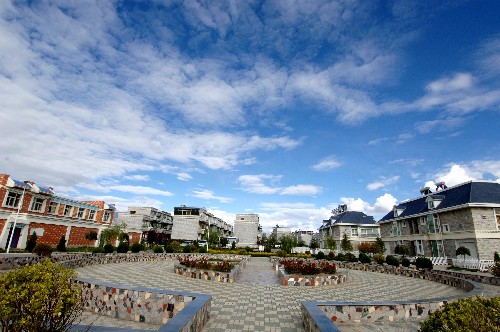|

|
|
This?file photo taken by Xinhua?News Agency on September 26, 2007 shows?the newly built tibetan-style?residential buildings in Lhasa, captial of Tibet Autonomous Region. ? |
Lhasa, the world's highest city, is to become a coordinated and distinctive modern metropolis by 2020, according to an urban planning scheme approved by the State Council yesterday.
As capital city of the Tibet autonomous region, Lhasa must insist upon a sustainable development strategy to reconcile economic, environmental and population concerns at the same time, said the plan, released on the central government's website (www.gov.cn).
Lhasa should "scientifically use" the 1,480 sq km allotted for comprehensive urban-rural development and facilitate economic growth in all surrounding areas, it said.
According to the plan, Lhasa, Tibet's largest city, should cap its downtown population at less than 450,000, while constraining its land used for urban development within 75 sq km.
In its reply, the State Council, China's cabinet, also urged local authorities to "cautiously preserve" the city's architectural aesthetics, its massive cultural relics and omnipresent religious sites.
"(Authorities) ought to coordinate the relations between the ancient and modern civilizations, between the old and new downtowns, and between natural and humanistic resources," it stressed.
Once those are realized, Lhasa is set to become an "economically prosperous, socially harmonious, and eco-friendly modern city with vivid cultural characteristics and deep ethnic traditions," the document said.
When the central government conducted its first consensus in the region in 1953, Lhasa's residents totaled only 30,000, and 4,000 of them were beggars.
Today, the city is home to about 500,000 people, which increased more than 11 times since the liberation of Tibet in 1951.
Literally meaning "the holy city" or "place of the Buddha," Lhasa became Tibet's political center in the seventh century.
(China Daily March 17, 2009)